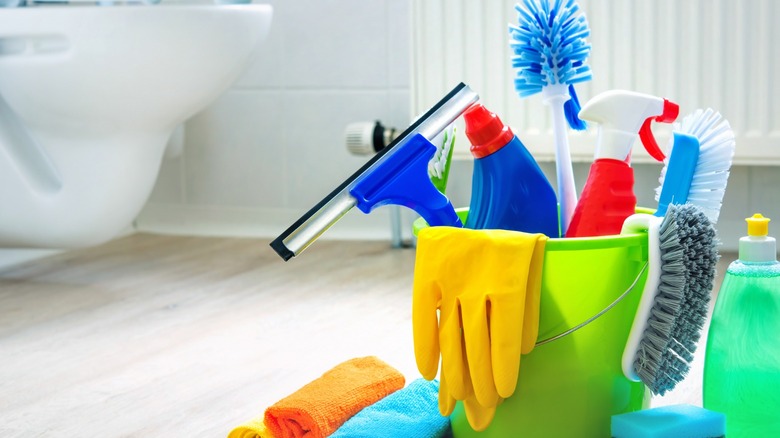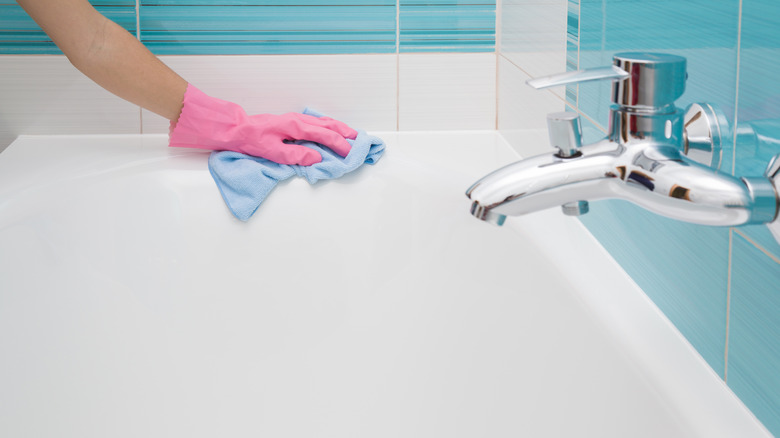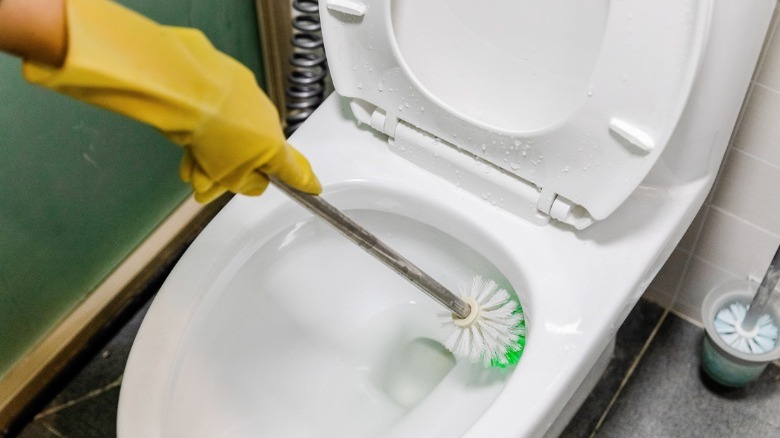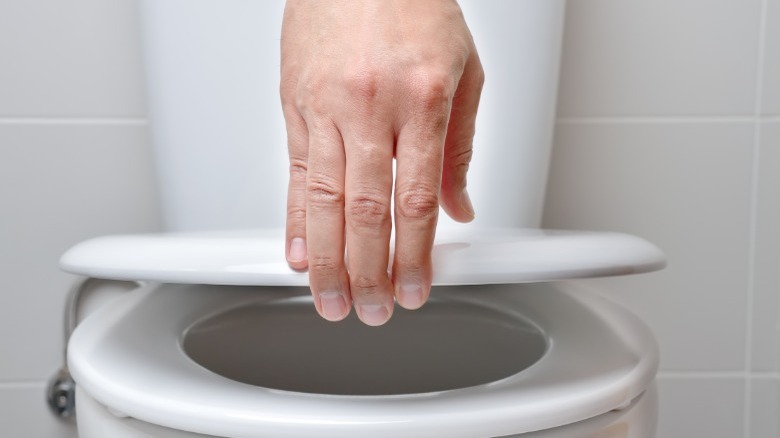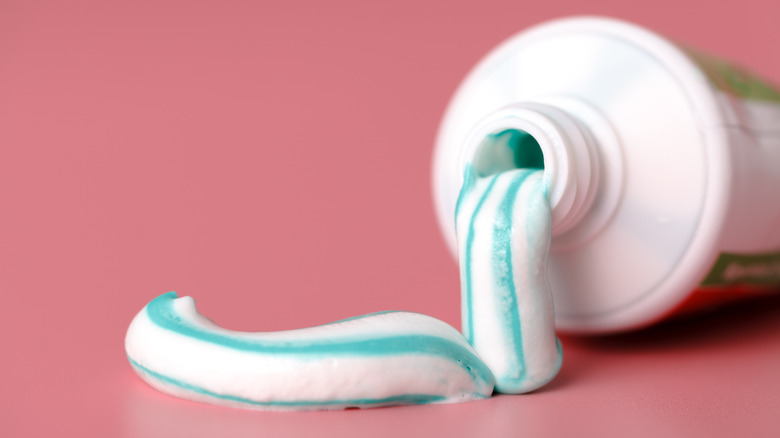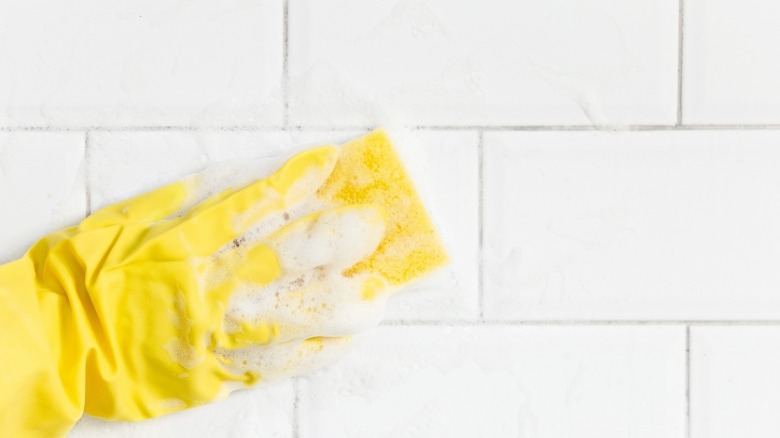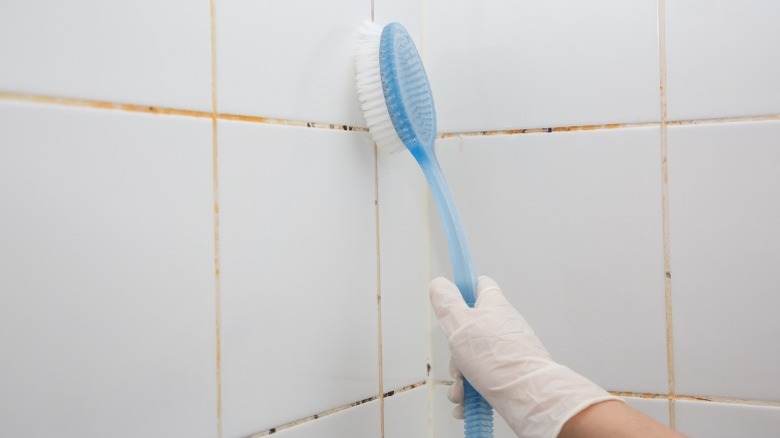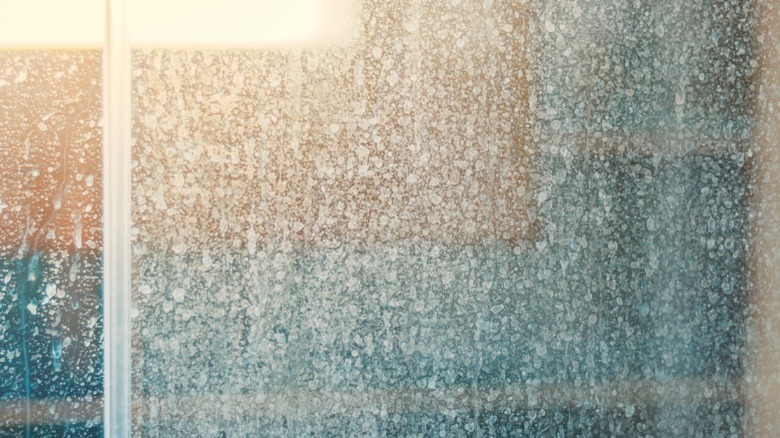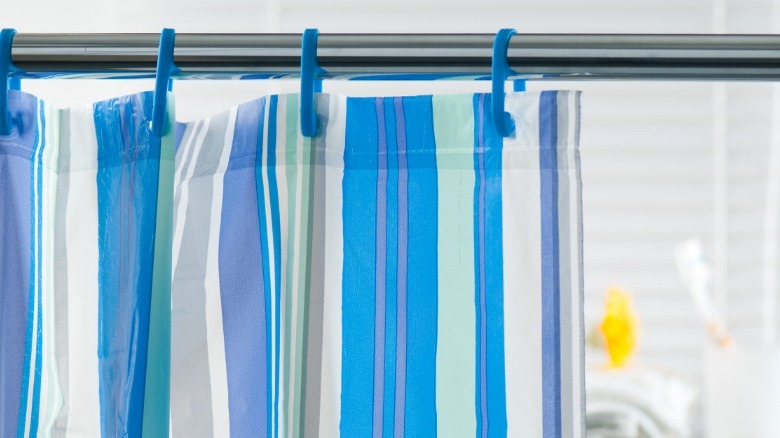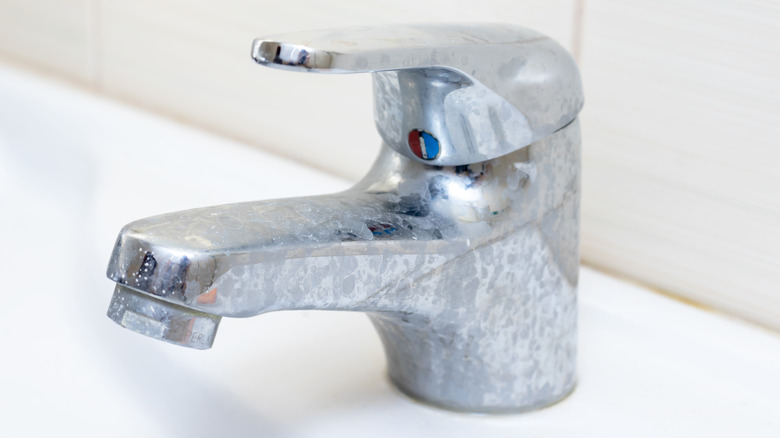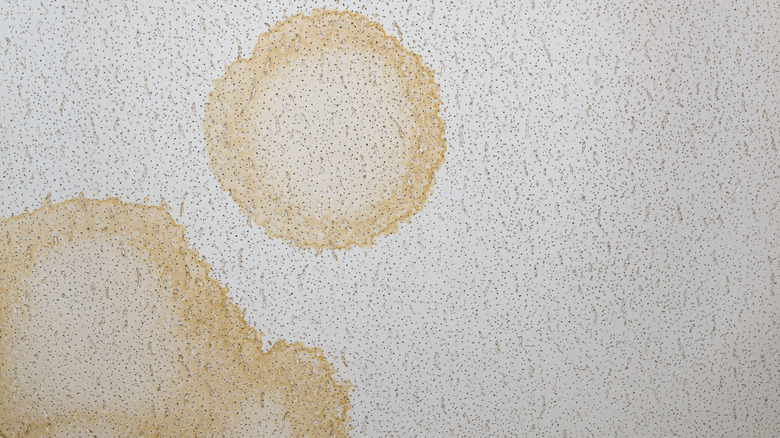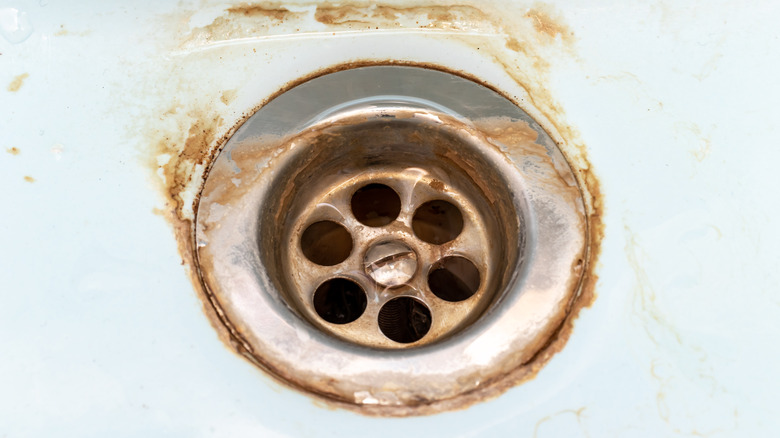How To Eliminate Bathroom Stains
It's no secret that bathrooms take a beating. With daily use, they can suffer from excessive moisture, soap scum, and mineral buildup. With all the dampness and products used, unsightly stains form quickly. If not removed thoroughly, they can leave your bathroom looking and feeling dingy and gross. Plus, those pesky stains could even harm your pipes and lead to costly repairs.
Many bathroom stains develop when homes have hard water with too many minerals. This can cause unsightly stains in addition to wreaking havoc on your hair and skin. If you frequently see the scaly buildup, this may be the reason why. Installing a water softener is a good way to combat hard water problems and can help prevent stains in the first place. Everything from leaky toilets and dripping faucets can also be a source of stains. Keep these in good working order to ward off messes as much as possible. But if you do still end up with stubborn stains despite your best efforts, it's totally possible to get rid of them.
Cleaning the bathtub
Relaxing in a bathtub is soothing for the soul but the longer you stay in there, the greater the chances for a telltale bathtub ring to be left behind. This residue generally consists of soap scum and remnants of shampoo, conditioner, and lotions. For fiberglass and acrylic bathtubs, spray a 50/50 mixture of vinegar and water onto the ring, let it rest for 20 minutes, then wipe it down with a sponge. This works best when you do it soon after the bath.
For more stubborn stains on fiberglass tubs, combine baking soda and water to make a thick paste to apply to the ring with a sponge. Then, spray vinegar on the paste and let the fizzing chemical reaction get to work. Rinse with clean water and repeat the process as necessary until the stain is removed. Porcelain bathtubs can be damaged by harsh cleaners but you can apply a mixture of lemon juice and salt to stains. After about an hour, gently scour the stain with the dried-out mixture and rinse the surface well.
Unsightly toilet bowl rings
Even if you are conscientious about cleaning your toilets, rings can still appear whether they are used often or not. Be careful when choosing a cleaning method because toilets made from porcelain may be easily scratched and some chemicals can damage pipes. Borax is gentler than bleach and can usually be found in the detergent aisle in grocery stores. Add about ¼ cup of Borax to freshly-flushed toilet bowl water. Use your toilet brush to mix the powder into the water and lightly apply the solution to the sides of the bowl. Then mix a cup of vinegar into the water for extra soaking power. After about 20 minutes, flush the toilet and use the brush to remove any remaining stains before flushing again.
If you can't seem to get rid of stains, you might need to drain the water for a thorough cleaning. Locate the water valve behind the commode and shut it off. Flush the water repeatedly until the bowl is empty. Then, you can pretreat and stains with a household degreaser like 409 Multi-Surface Cleaner. After 15 minutes, put baking soda on your toilet brush and start scrubbing. Turn the valve back on and wait for the tank to refill. Then, flush it several times until the water in the bowl is clear of any cleaning residue.
Scary spots on toilet seats
Toilet seats accumulate significant amounts of bacteria when they're not cleaned often and when they are badly stained, they should be replaced. Otherwise, regular cleaning and timely spot removal will keep the seat more hygienic. For a simple refresh, spray vinegar on a few paper towels to dampen them. Place these on the seat and leave them there to work for a few hours. Then, the seat can be wiped with a soft sponge and water and dried with microfiber towels.
For tougher jobs, put on rubber gloves and spray a bleach cleaning product onto stubborn toilet seat stains. Wipe that off with paper towels and then combine ¼ cup of baking soda with warm water to form a paste. Apply this to the stains and scrub them gently with a sponge. Allow the paste to sit while you clean the rest of the bathroom, then clean it off with cool water.
Dried-on toothpaste globs
Toothpaste is a common culprit that hardens quickly and can seem like cement when you try to remove it. If the accumulations are thick, you'll need to first soften them up with warm water and remove them with a plastic scraper or another non-abrasive tool. Toss it in the trash instead of letting the mess go down the sink because a large amount could clog the pipes. Then, use an all-purpose cleaner to easily wash away any bits that remain.
Rogue toothpaste can be a little more complicated if it contains dyes or charcoal. These can leave stubborn stains on sinks and countertops. A Mr. Clean Magic Eraser can usually remove any stain left behind. Just add a bit of water to it and scrub gently until the mark is gone. If this colorful toothpaste makes its way onto bathroom linens, make sure to apply a pretreatment, let it sit, and wash them per their label's instructions. Make sure the stains are completely removed before tossing items into the dryer to avoid setting them.
Stained shower walls and floors
Shower tiles get stained with everything from body wash and shampoo to hard water and mold. For ceramic and porcelain tiles, vinegar comes to the rescue again. Combine two parts of distilled vinegar with one part of warm water in a spray bottle, add a drop or two of dish soap, and shake it gently. Then, spritz the tiles evenly and allow the spray to sit for a few minutes. Use a cleaning cloth to tackle tough stains before rinsing the solution away. Keep in mind, if your shower tiles are made from stone like travertine, you'll want to use cleaning products specifically designed for this to avoid any damage.
Shower floors can be routinely cleaned with nonabrasive cleaners that can be used to work your way into the corners and around the drain. A baking soda paste will work on soap scum and vinegar will help with that and oily residue. For stains, place an old, clean cloth on top and pour on hydrogen peroxide. Let this sit overnight and you can remove it and rinse the area in the morning.
Dirty and moldy grout
Even when you thoroughly clean shower tiles the grout can still have obvious mold and grime because it's porous. Grout sealants keep the moisture out but that can wear off over time. You'll need to take precautions when cleaning moldy grout if you decide to use a lot of bleach. Open any windows, turn on the exhaust fan, and protect your eyes. You may also want to wear a mask because of the strong smell.
Add one part chlorine bleach to four parts water in a spray bottle and apply it to the grout. Give it about 30 minutes to work before scrubbing it with a firm toothbrush. If you prefer not to use bleach, you can mix up a baking soda and hydrogen peroxide paste and apply it to your grout to soak. To keep your shower cleaner long-term, squeegee the walls after showering and use daily after-shower sprays to prevent soap scum buildup.
Shower door stains and cloudiness
Glass shower doors and walls can lose their pristine appearance from soap scum and hard water stains. Before you know it, you might not even be able to see through them. Glass can scratch, of course, so you'll need to proceed with care. Avoid rough scrubbing pads and brushes, and stick with a damp sponge or paper towels. Straight vinegar can remove hard water stains, and you can try warming it up in the microwave for 30 seconds before spraying it on. If that doesn't work, add a few drops of dishwashing liquid to the bottle, shake, spray, wait half an hour, and scrub.
If there are streaks left on the glass, add a tablespoon of ammonia to a cup of water, spray it on, and wipe it away with a clean, dry, microfiber cloth after a few minutes. Some products are also made to do the hard work for you, like Windex and Clean X Repel. And products like Rain X Shower Door Cleaner are preventative and create seals to keep out water and soap scum.
Mold stains on shower curtains and liners
Fabric and plastic shower curtains and liners can get covered in mold and mildew but this doesn't necessarily mean that they need to be replaced. The stains can be of various colors and can develop slowly before taking over. If it's a cloth shower curtain or liner, read the label and see if it's machine-washable. If it is, pretreat the mold spots with a stain remover scrub or baking soda paste and launder as directed. Many shower curtain fabrics can be put in dryers, or you can hang them out to dry.
If you have to clean your curtain or liner by hand, you don't need to take it down. Simply sprinkle a teaspoon of baking soda onto a scrubber sponge and add a drop of dish soap. Scrub the mold until it starts to loosen up and rinse well with clean water. Wipe it down when finished. You can also use diluted bleach but not too much, or you could damage the fabric or plastic. Never mix the bleach with other cleaning products, including vinegar.
Water stains on faucets and fixtures
Even if you have soft water, it can evaporate and leave sodium spots in your bathroom. Water stains are usually the most noticeable on chrome handles, showerheads, and faucets because of the contrast. They will also build up considerably when not attended to. Vinegar and baking soda will work on these stains but CLR Calcium, Lime & Rust Remover can be even more effective. That's because it also removes limescale. This hard, chalky gunk can block up plumbing pipes and lead to major problems.
To use CLR, combine one part to eight parts of water and spray it on the faucets and fixtures. Wait a few minutes and rinse with water. To clean a scaly, hard water-stained showerhead, remove it from the wall and place it in a sturdy plastic bag or container. Add equal parts of CLR and water and let the showerhead soak for three minutes or so. Then, remove it and scrub away the loosened scale with a toothbrush. If you can't remove the showerhead from the wall, just put a plastic bag underneath, add the solution, and secure it with a zip tie. The showerhead should soak in clean water for a few minutes after being scrubbed. Then, run it for a few minutes to remove any cleaning residue.
Yellow bathroom ceiling stains
You might not look up at the ceiling that often when you're in the bathroom but it's a good idea to check once in a while. Nasty yellowish stains can develop and these are caused by mold and mildew or water damage. If the stains or mold are significant, you may want to call a plumber because there could be a serious water leak.
To remove these yellow stains from ceiling surfaces, you can try bleach or a mold or stain-remover product. You may need to wear protective eyewear, gloves, and masks when using these, so read the labels for directions. If the stains won't budge, the ceiling may have to be repainted. A quality primer will provide a barrier to keep stains from breaking through a new layer of paint. Then, coat the ceiling with paint designed to withstand the humid conditions of a bathroom. If the water or mold damage is serious, part of the ceiling's material might need to be replaced to prevent issues from spreading.
Rust removers
Red and brown rust stains come from iron and manganese in water and could be symptomatic of a larger problem like corroded pipes. If the rust seems extensive or keeps coming back after being removed, you may want to contact a professional plumber. One natural method for removing rust stains is to combine enough lemon juice and salt to create a workable paste. Apply this to the rust with a clean scrub brush and let the mixture work for 20 minutes before rinsing it off. A wet pumice stone can also work and is good for porcelain surfaces because it doesn't scratch.
CLRalso works on rust stains but the manufacturer advises against leaving this product on anything for more than two minutes. ShawsPads can be used to remove surface rust and these cleaning pads only need to be dampened with water. They're environmentally-friendly and if you can't find them at the hardware store, you can order some online to add to your cleaning arsenal.
